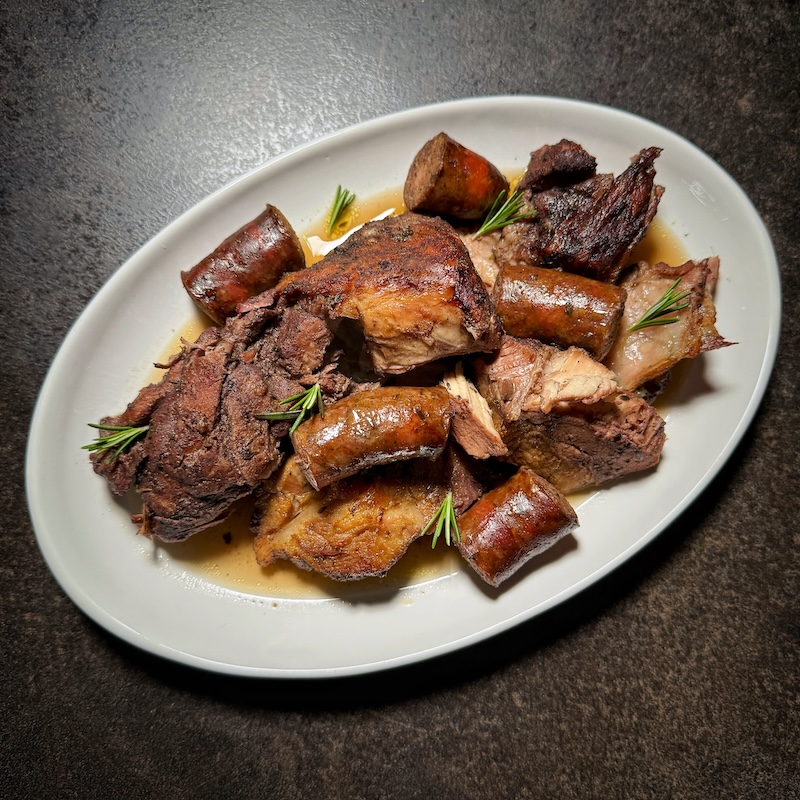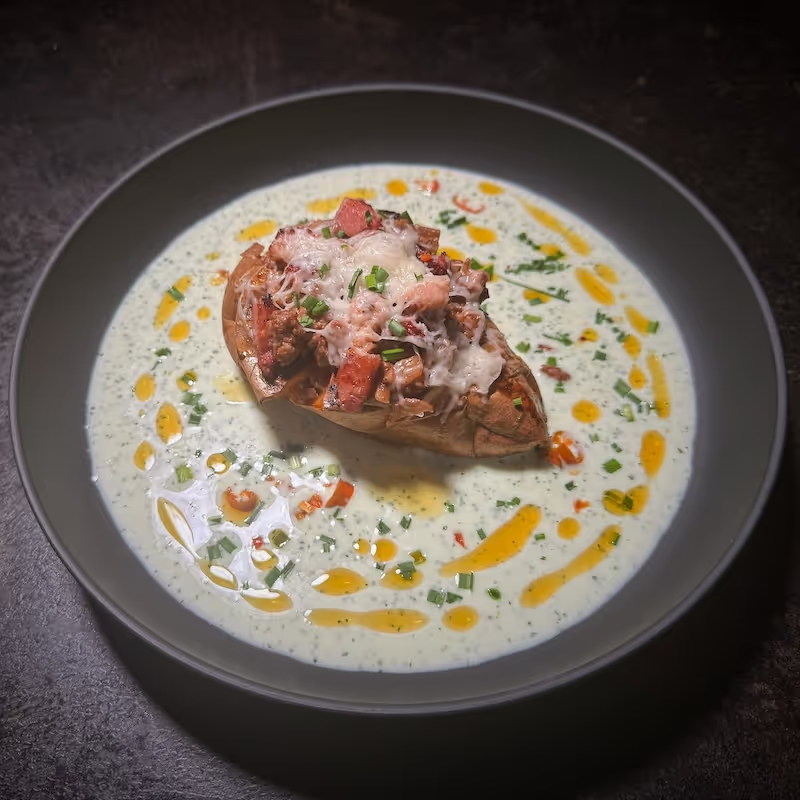Beef “Wiener” Schnitzel, Our Way
Crispy beef “Wiener” schnitzel in minutes—pounded tenderloin, batter-then-crumb, quick fry. Full recipe, tips, sides, and nutrition on our website.
Servings
Prep Time
Cook Time
Ingredients
Total Time
Ingredients
Schnitzel
- 2 beef tenderloin medalions
- 2 eggs
- 2 tbsp all-purpose flour
- 60 g breadcrumbs
- 3 tsp lemon juice
- 1 tbsp olive oil
- oil for frying
- 2 tsp sweet paprika
- salt and pepper to taste
Equipment
Instructions
Austria holds a special place in my heart—its alpine calm, café culture, and, of course, that irresistible plate-filling Wiener Schnitzel. When I cook it at home, though, I don't go full traditional. Instead of veal, I use beef tenderloin medallions. Why? Because tenderloin gives you a buttery texture without being delicate to handle, it's easier to find, and it delivers big, beefy satisfaction once pounded thin and fried to a shattering crunch.
Think of this as a love letter to the classic, reimagined for the way we actually cook and eat. Below, you'll find how to make schnitzel step by step, plus the story, the schnitzel origin, and the decisions behind our house style.
Step-by-Step: How to Make Crispy Beef Schnitzels
- Trim & prep: Remove any white silverskin or tough membrane from your medallions—those stay chewy even after cooking.
- Pound thin: Place each piece on a board, and pound with a meat mallet until just a few millimeters thick.

- Season & marinate: Season with salt, black pepper, and paprika.
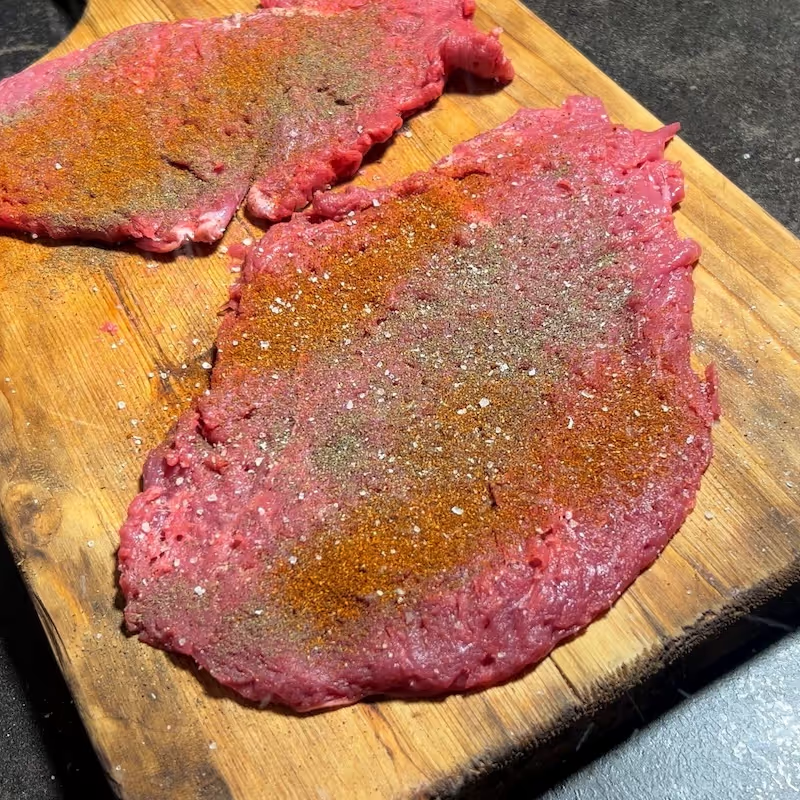
- Mix olive oil with lemon juice, rub all over the meat.
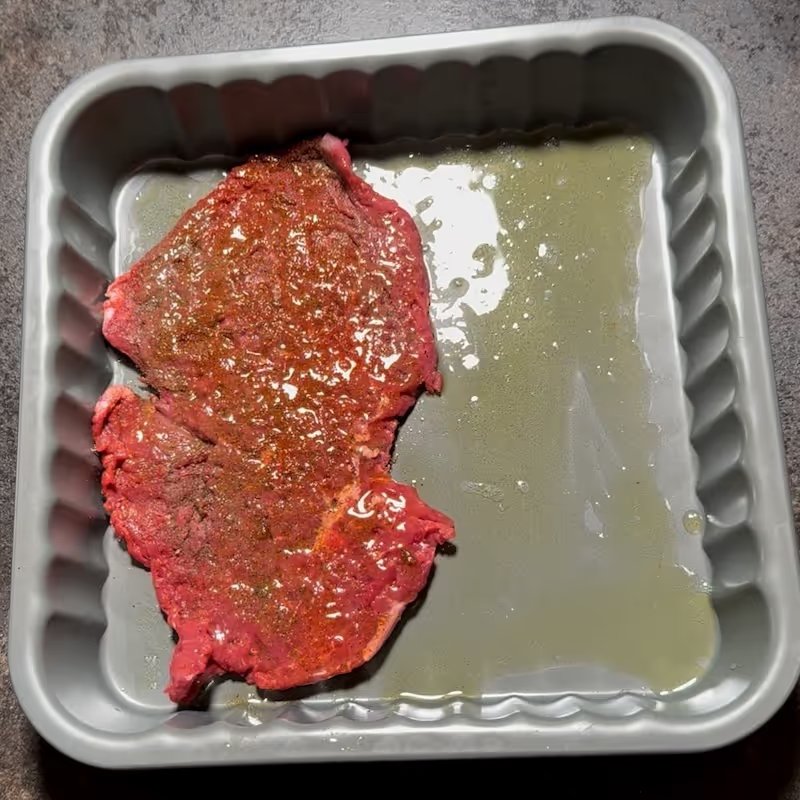
- Cover, and refrigerate for about 1 hour.
- Dredge: Make a batter by combining beaten eggs, with flour, salt and pepper.

- Coat each piece in the batter.

- Then press into fine dry breadcrumbs.
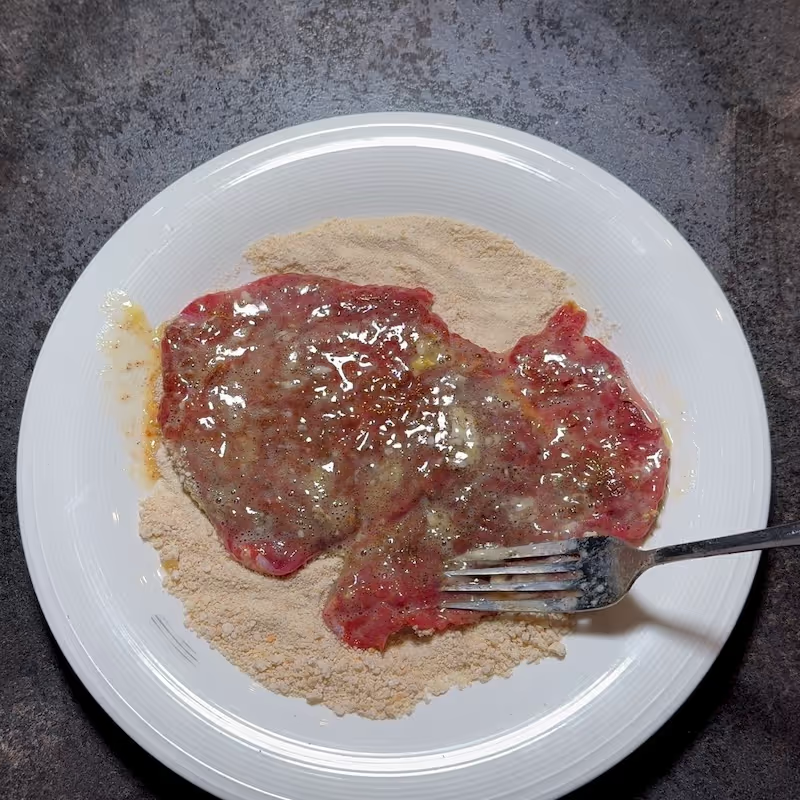
- Fry: Heat neutral frying oil (⅔–1 cm depth) to medium-high. Fry 2-3 minutes per side until deep golden and crisp.
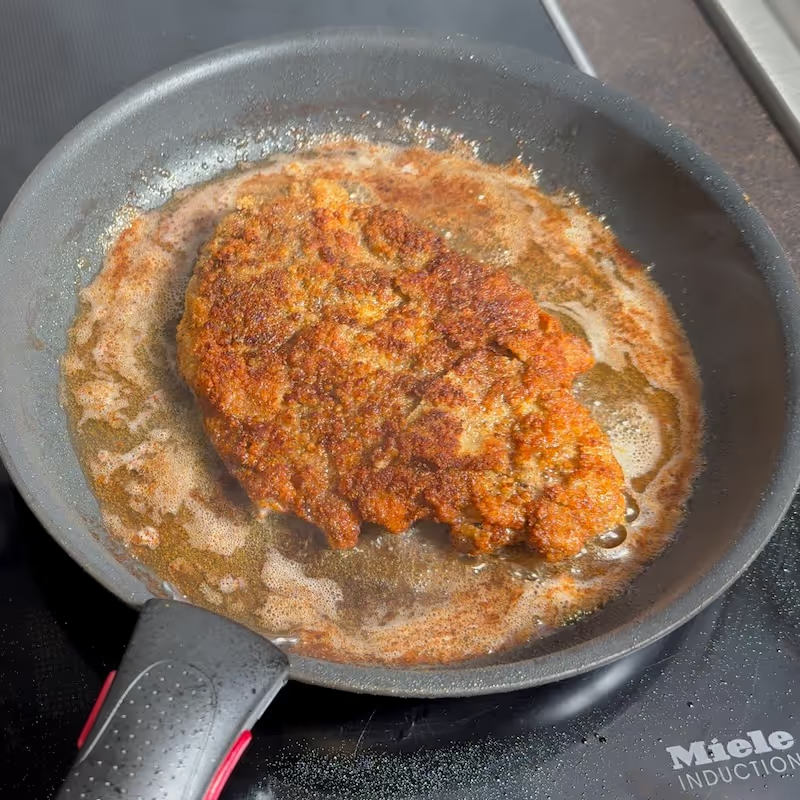
- Rest: Drain on paper towels.
- Serve: Classic sides: warm potato salad or simply boiled potatoes—and if you have it, a spoonful of cranberry (or lingonberry) jam.
If you're new to this, remember: the crust should "float" in hot oil and stay whisper-thin and blistered—that's the hallmark of great schnitzel recipes.
Serving Ideas
- Warm potato salad with mustard and chives
- Simple lemon wedges and parsley salad
- Cucumber-dill salad or buttered new potatoes
- Cranberry or lingonberry jam for a sweet-tart contrast
After the Recipe: The Story, Influences, History, and Our Adaptation
The Recipe's Path to Our Table
I fell for schnitzel in Austria—no surprise there. But at home, I wanted a version that fits our pantry and our taste. Veal can be harder to source and pricier where we live, so I began testing medallions of beef tenderloin.
Pounded thin, they cook in minutes, keep their tenderness, and welcome a brighter seasoning profile (paprika, lemon) without losing that classic fried-cutlet charm.
Over time, this became "our" Weiner Schnitzel Recipe—faithful to the spirit of the original yet easy enough for a weeknight.
Influences Behind This Dish
Schnitzel is part of a big family of European fried cutlets. You'll find cousins in Italy (cotoletta alla milanese), across Central Europe, and in many home kitchens where cutlets are pounded thin, breaded, and fried.
The technique travels because it makes sense: pounding tenderizes, breading protects delicate meat and gives crunch, and quick frying locks in juiciness.
I keep the Austrian cues (lemon, jam, potatoes) while taking a small liberty with the protein and a paprika-forward seasoning that we love.
Why Beef Tenderloin for Schnitzel?
Beef tenderloin is lean, tender, and consistent in thickness, which makes it perfect for even pounding and fast frying. It also takes on seasoning beautifully, so the paprika–lemon notes sing through the crispy crust. In short: maximum tenderness, minimal fuss—our favorite [beef schnitzel cut].
A Short (Not-So-Short) History of the Original Wiener Schnitzel
The schnitzel's origin is a story with layers. The protected term Wiener Schnitzel in Austria refers specifically to a veal cutlet that's pounded thin, breaded, and fried to crisp, golden perfection.
The dish, widely associated with 19th-century Vienna and the Habsburg court, likely drew inspiration from earlier Italian traditions—most famously cotoletta alla milanese, a breaded veal cutlet known in Lombardy.
Culinary historians note that techniques for coating and frying meat existed earlier in Central and Southern Europe, but 19th-century Vienna helped codify and popularize the style the world now recognizes.
What makes Wiener Schnitzel distinctive isn't only the veal; it's also the texture and finish: the coating should be delicate, airy, and slightly "souffléed," detaching in tiny pockets from the meat during frying. Traditionalists often fry in clarified butter or a butter–oil mix, serve with lemon wedges, and pair it with warm potato salad or parsley potatoes. Lingonberry or cranberry preserves add brightness and contrast.
As schnitzel spread, so did local adaptations. Pork and turkey versions are common across Central Europe. Elsewhere, "schnitzel meaning" broadened colloquially to describe any thin, breaded, fried cutlet—hence home cooks swapping in whatever tender meat is available.
That's how you find beef schnitzel in some regions: it's not canonical Wiener Schnitzel, but it's absolutely within the broader family of schnitzels.
Our kitchen sits respectfully between tradition and practicality. We keep the pounding, breading, lemon, and potato sides—the soul of the dish—while acknowledging that high-quality veal isn't always accessible.
Using beef tenderloin lets us preserve the ultra-tender bite and rapid cooking that define the experience. In that sense, the "Vienna idea" lives on: thin, crisp, golden, and celebratory—just with a protein swap that suits our home pantry.
Why We Chose Beef, Not Veal
- Availability & ethics: Quality veal can be harder to source locally; beef tenderloin is easier to find and choose responsibly.
- Texture: Properly pounded tenderloin is soft and succulent—very close to the mouthfeel people love in classic veal.
- Flavor pairing: Beef welcomes bolder seasoning (paprika, lemon) without overwhelming the delicate crust.
- Consistency: Medallions give uniform thickness, so every piece fries evenly—key for any [schnitzel recipe].
Nutrition Notes & Interesting Facts
- Macronutrients: Because tenderloin is a lean cut, the meat itself is relatively low in fat. Most calories come from frying and breadcrumbs. A lighter fry (proper oil temp, brief cook time) keeps the crust crisp without excessive absorption.
- Portion control: Pounding increases surface area, making a modest portion feel generous—handy if you're balancing calories.
- Fiber & freshness: Pair with a tangy cucumber salad, lemony greens, or warm potato salad with herbs to add fiber and freshness.
- Oil temperature: Frying at the correct temperature reduces oil uptake and preserves that signature blistered crust seen in the best [schnitzel recipes].
- Gluten options: Use gluten-free breadcrumbs and flour, and you'll still get great results.
- Meaning & method: If you're wondering what schnitzel is, think "thin cutlet, breaded, fried." The method matters more than the specific meat in many contemporary home kitchens.
FAQ
Q: Can schnitzel be chicken?
A: Yes. While Wiener Schnitzel is veal by definition, home schnitzel recipes frequently use chicken breast pounded thin. The how to make schnitzel method stays the same: pound, season, flour–egg–crumb, fry.
Q: Can schnitzel be frozen?
A: Yes. Freeze breaded, unfried cutlets on a tray, then transfer to a bag for up to 2 months. Fry from frozen at a slightly lower heat to cook through without burning. You can also freeze cooked schnitzel, but the crust won't be quite as airy upon reheating.
Q: Are schnitzel and milanesa the same?
A: They're close cousins. Both are thin, breaded, fried cutlets. Milanesa (common in Italy and Latin America) often uses beef or chicken and may include different seasonings or sides. Schnitzel's meaning overlaps, but Wiener Schnitzel specifically means veal in the Austrian tradition.
Q: When was schnitzel invented?
A: The technique predates the 19th century, but Wiener Schnitzel rose to fame in the 1800s in Vienna, likely influenced by the Italian cotoletta tradition. That's the widely cited schnitzel origin.
Conclusion
I hope you'll try this house schnitzel recipe and tag us when you do—we love seeing your plates. The full cooking video is now on YouTube; check it out, and don't forget to like and subscribe for more classics-with-a-twist.
Nutrition Facts / Serving
- Calories: 744 kcal
- Total Fat: 40.5 g
- Cholesterol: 310 mg
- Sodium: 1,070 mg
- Potassium: 820 mg
- Total Carbohydrate: 33.5 g
- Sugars: 3 g
- Protein: 59.5 g


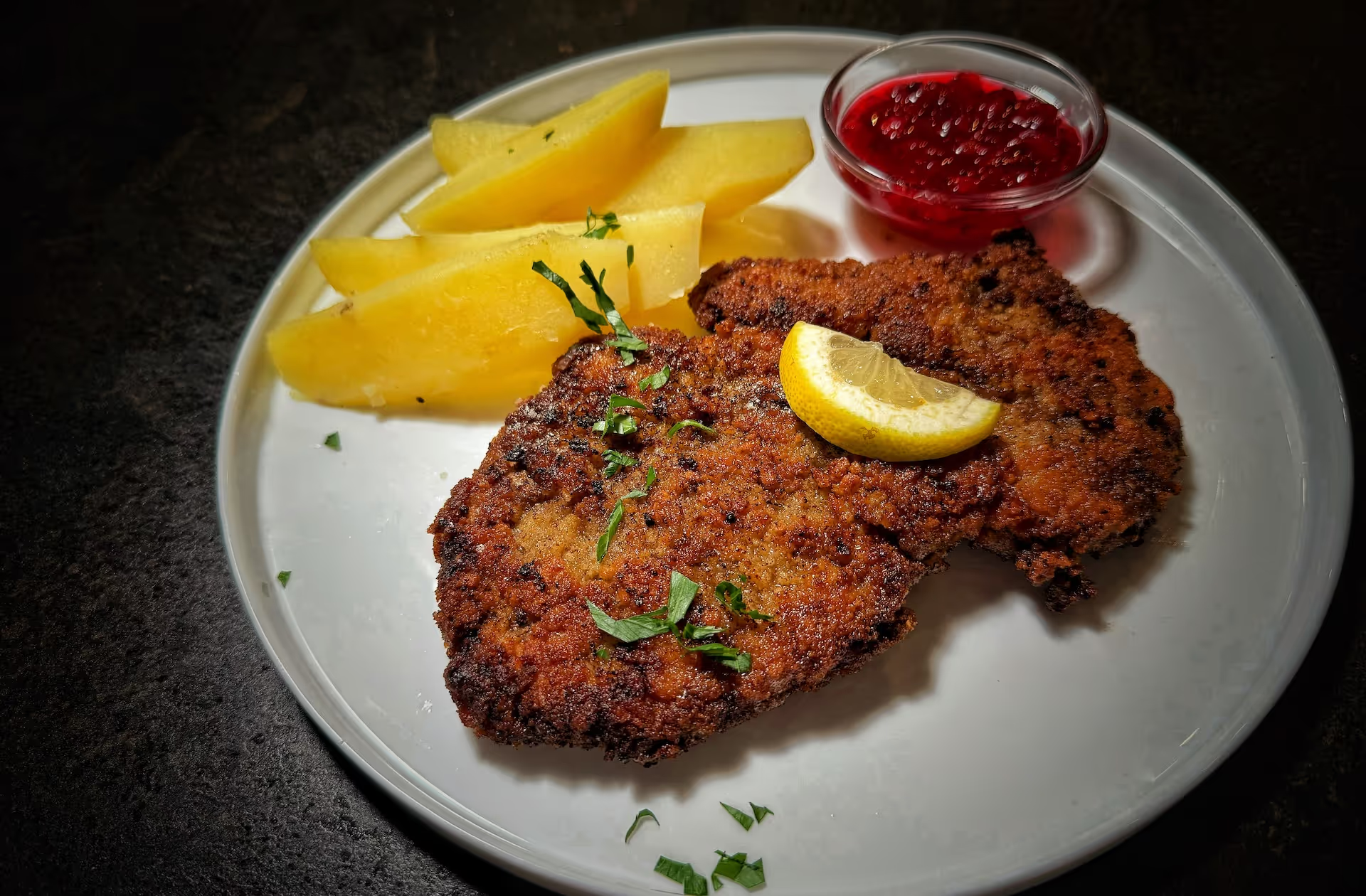

.svg)



